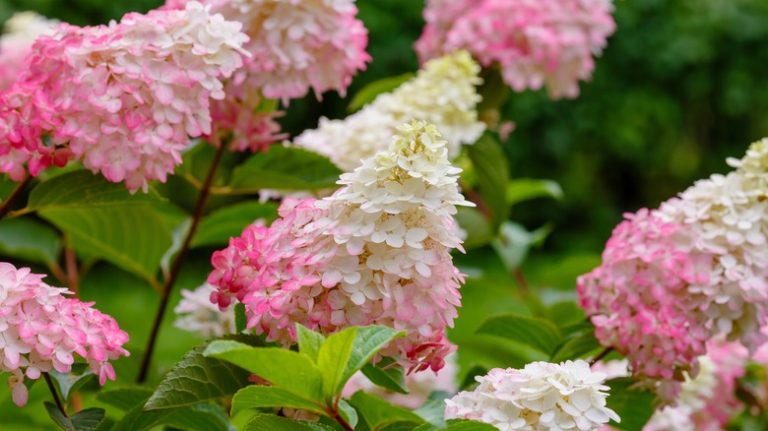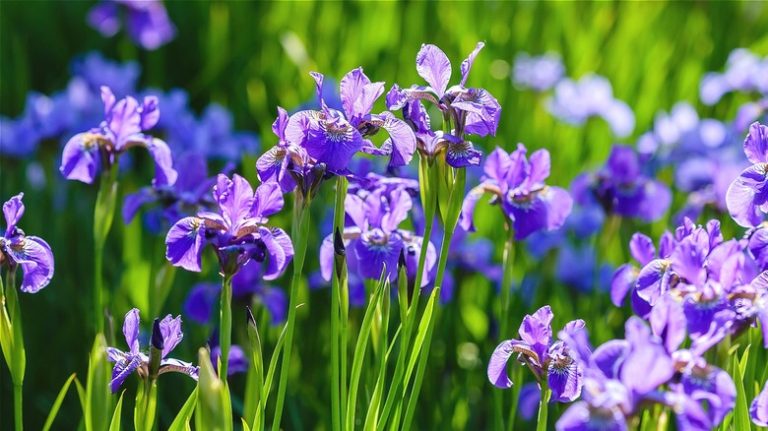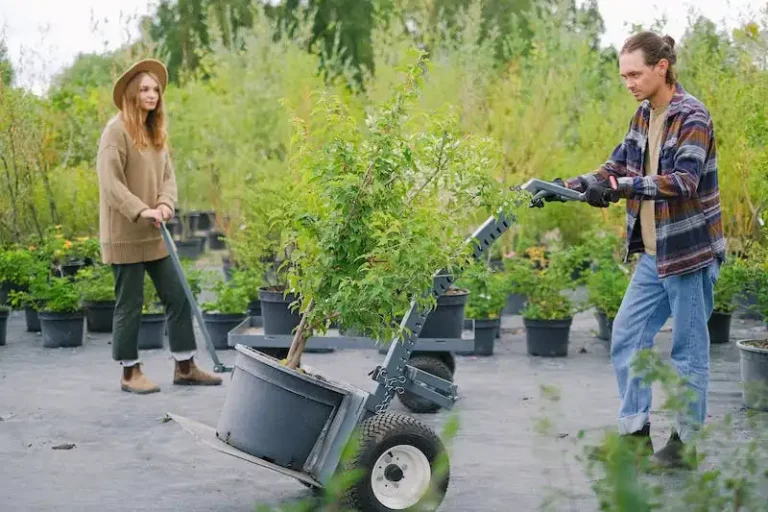Wild flowers are found in every corner of the world. They bring beauty and color to our surroundings, reminding us of the wonders of nature. There are many different types of wild flowers, each with its own unique characteristics and beauty. Some are small and delicate, while others are tall and striking. No matter their size or shape, wild flowers are still a sight to behold.
Wild flowers can be found in a variety of environments, from meadows and fields to forests and hillsides. They grow from seeds that are scattered by the wind, animals, or even water. Some wild flowers, like the cardinal flower and trillium, prefer moist conditions and shade, while others, like the bee balm and coneflower, thrive in sunny meadows.
In total, there are 17 different species of wild flowers that have been submitted for conservation efforts. These include the Liatris, Lobelia, Oenothera, and Ratibida columnifera, among others. These species are highly popular and will grow easily in the right conditions. It is important to keep wild flowers available for future generations to enjoy, as they provide food and shelter for birds, butterflies, and other wildlife.
Wild flowers are a crucial part of our ecosystem. They not only provide beauty and enjoyment, but they also play a vital role in pollination. Bees, butterflies, and other insects are attracted to the nectar of wild flowers, and in the process, they help the flowers reproduce by carrying pollen from one flower to another. This ensures that new seeds are produced and that the cycle of life continues.
Whether you’ve picked a bouquet of delicate lilies or are simply enjoying a walk through a field of wild flowers, take a moment to appreciate the beauty and wonder of these uncultivated plants. Wild flowers are a true treasure, and by conserving their habitats and spreading their seeds, we can ensure that they continue to grace our meadows, fields, and gardens for years to come.
Wild Flowers
Wild flowers can be found in various natural environments, including prairies, fields, and even dooryards. These wonderful plants bring beauty to their surroundings and serve an important purpose in the ecosystem.
One such wild flower is the Rudbeckia hirta, commonly known as the Black-Eyed Susan. With its bright yellow petals and dark brown center, it is a favorite among bees and butterflies. It is a perennial plant that can reach a height of 1 to 4 feet, and it blooms from late spring to early fall.
Another wild flower, the Echinacea purpurea or Purple Coneflower, is known for its beautiful purple petals and spiky center. It grows well in full sun or partial shade and can reach a height of 2 to 5 feet. It attracts birds and butterflies, making it a popular choice for gardens.
The Asclepias spp., or milkweed, is a wild flower that plays a vital role in the life cycle of monarch butterflies. These plants need full sun and well-drained soil to thrive. Milkweed also produces beautiful clusters of flowers that are usually pink or orange in color.
The Trillium spp., or trillium, is a wild flower that often grows in the northern regions of North America. It has three petals and blooms in the spring. The trillium is considered a protected species, so picking it in the wild is generally not allowed.
Another common wild flower is the Lobelia cardinalis, or cardinal flower. This plant has vibrant red flowers that attract hummingbirds and butterflies. It can reach a height of 2 to 4 feet and blooms from mid-summer to early fall.
The Achillea millefolium, or yarrow, is a wild flower that is known for its delicate white or pink flowers. It can grow in a variety of soil types and is resistant to drought. Yarrow blooms from early to late summer and is often used in dried flower arrangements.
In conclusion, wild flowers like the Black-Eyed Susan, Purple Coneflower, milkweed, trillium, cardinal flower, and yarrow are just a few of the many beautiful and important plants found in nature. They provide food and shelter for birds, bees, and butterflies, and they add beauty to our surroundings. It is important to appreciate and protect these wild flowers for the future generations to enjoy.
What are native plants
Native plants are those that naturally occur in a particular region or ecosystem, without any human intervention. They have evolved over time to adapt and thrive in the specific environmental conditions of their native habitats. These plants play a crucial role in maintaining a healthy ecosystem and provide various benefits to both wildlife and humans.
The purpose of native plants is to support and sustain the native wildlife, including birds, insects, and mammals, by providing them with food, shelter, and nesting sites. Unfortunately, most wildflowers have been displaced by invasive species, which do not provide the same level of support to the local ecosystem.
Thankfully, efforts are being made to protect and conserve native plants. One example is the cardinal flower (Lobelia cardinalis), a native wildflower found in eastern North America. Its striking red flowers attract hummingbirds and butterflies, making it a valuable addition to gardens and meadows.
| Natives Plants | Common Names |
|---|---|
| Eastern Purple Coneflower | Echinacea purpurea |
| Black-eyed Susan | Rudbeckia hirta |
| Butterfly Weed | Asclepias tuberosa |
| Cardinal Flower | Lobelia cardinalis |
| Common Yarrow | Achillea millefolium |
| Bee Balm | Monarda didyma |
| Spotted Joe Pye Weed | Eutrochium maculatum |
| Virginia Bluebell | Mertensia virginica |
| Field Thistle | Cirsium discolor |
| Trillium | Trillium grandiflorum |
| Virginia Creeper | Parthenocissus quinquefolia |
These are just a few examples of native plants that you might find in different parts of the world. Native plants are often perennial, meaning they live for multiple years and flower again each season. They can grow in a wide range of conditions, although some are more specific to certain habitats like mountains, prairies, or wetlands.
In gardening and landscaping efforts, it is important to select native plants over invasive species. Native plants are more likely to thrive in their natural environment and require less additional care and maintenance. They also contribute to the ecological balance of the area by providing food and habitat for native wildlife.
In conclusion, native plants are essential for the conservation of biodiversity and the health of ecosystems. They are beautiful, resilient, and support a wide range of wildlife. By planting native species in our gardens and yards, we can contribute to the preservation of native habitats and create a more sustainable environment.
What should I plant
If you’re looking to add some color and beauty to your garden, planting wild flowers is a great choice. They are not only easy to grow, but they also attract birds, butterflies, and other pollinators. Here are some wild flower varieties that you can consider:
- Monarda (Bee Balm) – This flower makes a beautiful addition to any garden. It grows well in the northern regions and produces vibrant red, pink, or violet flowers. Monarda attracts hummingbirds and butterflies, making it a perfect choice if you want to enjoy watching these beautiful creatures in your garden.
- Columbine – Columbine is a wild flower that comes in a variety of colors, including white, yellow, pink, and purple. It has unique bell-shaped flowers that attract hummingbirds. Columbine is a perennial plant, meaning it will come back year after year.
- Joe Pye Weed – This wild flower grows tall, reaching up to 7 feet in height. It has large, pink flowers that attract butterflies and bees. Joe Pye weed is a great choice if you want to add some height to your garden.
- Black-eyed Susan – Also known as Rudbeckia, this flower is a perennial that produces bright yellow flowers with a dark center. It is a great plant for attracting butterflies and birds. Black-eyed Susan is easy to grow and can spread to cover a large area in your garden.
- Common Primrose – This wild flower is native to England and has vibrant yellow flowers. It grows well in full sun and will attract bees and butterflies to your garden.
- Aster – Asters are annual flowers that come in a variety of colors, including purple and pink. They are easy to grow and will attract butterflies and bees.
- Mexican Hat – Also known as Ratibida columnifera, this wild flower has unique cone-like flowers that droop downward. It grows well in full sun and attracts butterflies and birds.
- Viola (Johnny Jump-Up) – This wild flower has small purple, yellow, or white flowers and is a great addition to any garden. It grows well in full sun or partial shade and will attract butterflies and bees.
- Yarrow – Yarrow is a perennial flower that produces clusters of small, flat-topped flowers in shades of pink, white, or yellow. It grows well in full sun and attracts butterflies and bees.
- Asclepias (Butterfly Weed) – Asclepias is a perennial flower that is a favorite of monarch butterflies. It has bright orange flowers and grows well in full sun.
These are just a few examples of the many wild flowers that you can plant in your garden. They will not only add beauty to your outdoor space but also provide food and shelter for birds and other wildlife. So, pick a few varieties that you like and start planting!
Source: 11 Wildflowers for a Future Mountains Garden – Submitted to Nature for You
wildflower
Wildflowers are a symbol of the natural beauty that can be found across our national landscapes. These uncultivated flowers can be found in a variety of habitats, from prairies to forests, and are often seen growing along roadsides and footpaths.
Some of the most common wildflowers include the asclepias, or milkweed, which is known for its tall, showy flowers and its importance to butterflies and hummingbirds. Other popular wildflowers include the cardinal flower, lobelia cardinalis, and the ironweed, vernonia gigantea, which both attract bees and butterflies. Wildflowers like the blue violet, viola sororia, and the common yarrow, achillea millefolium, can be found in moist woodlands and are often seen in photo-worthy natural settings.
Wildflowers are generally classified as either annuals, biennials, or perennials. Annual wildflowers complete their entire life cycle in one growing season, while biennial wildflowers take two years to complete their growth. Perennial wildflowers live for many years and can often be found growing in the same spot year after year.
Many people enjoy planting wildflowers in their gardens or in other uncultivated areas to attract birds, butterflies, and other pollinators. To select the best wildflowers for your area, it is important to know the nature of your site. Some wildflowers, like the joe-pye weed, eupatorium purpureum, and the eastern prairie fringed orchid, platanthera leucophaea, prefer moist habitats, while others, like the cardinal flower and the blue lobelia, lobelia siphilitica, do well in partial shade.
Wildflowers come in a wide variety of colors, shapes, and sizes, ranging from the delicate pink petals of the shooting star wildflower, primula denticulata, to the tall stalks of the ironweed. Whether you’re a seasoned wildflower enthusiast or just discovering the beauty of these uncultivated plants, wildflowers are sure to bring a touch of nature to any landscape.
- Wildflowers can be found across our national landscapes
- They are often seen growing along roadsides and footpaths
- Wildflowers attract birds, butterflies, and other pollinators
- There are different types of wildflowers, including annuals, biennials, and perennials
- The colors, shapes, and sizes of wildflowers vary greatly



